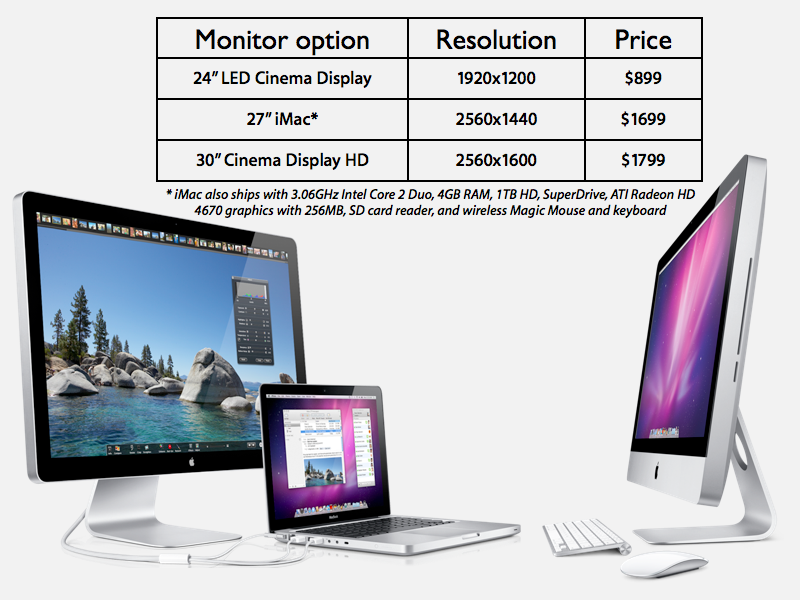Tests confirm Apple's 27" iMac only supports DisplayPort input
In a follow-up to its teardown of the 27" iMac last week, iFixit said it revisited the new hardware to see if it could display high-definition video from a non-DisplayPort external source.
The results of the testing indicate that Apple's stated specifications for the iMac were correct; while video input worked as expected with a 13" MacBook Pro equipped with Mini DisplayPort, all attempts to use a physical adapter dongle to supply alternative video signals to the new 27" iMac failed.
"The iMac will not act as a second (or primary) display using the Mini DisplayPort to DVI adapter that Apple sells," the group's website stated. "We tried it on a PS3 Slim, as well as a MacBook and MacBook Pro. It looks like we'll have to wait for a special adapter from Apple or a third party."
A one way street
According to Apple's stated specifications however, the 27" iMac's video input feature will only ever work with DisplayPort devices, and no physical adapter will change that fact.
Apple has frequently used converter dongles on its notebooks in order to support multiple types of video output signaling via the same port. For example, previous notebook models provided Mini-DVI ports proprietary to Apple which could deliver both VGA and DVI outputs using the appropriate connector. These ports provided multiple signaling types over the same physical pins.
Apple's modern machines similarly all supply a Mini DisplayPort connector (originally designed by Apple but now part of the official DisplayPort specification); using the right connector, users can extract and output any video signal type supported by the computer, including VGA, DVI, HDMI, and DisplayPort.
VGA is analog video; DVI and HDMI are both digital, electrically compatible, serial video data formats that only differ in their physical connectors; DisplayPort is an entirely new format that uses a packet signaling format.
The iMac's Mini DisplayPort supports output of all three, but can only input and display DisplayPort video. Unlike moving from DVI to HDMI, converting a DVI signal to DisplayPort requires more than a cheap physical dongle; it would necessitate a relatively expensive converter box to process the signal into a completely new format and possibly also a scaler to match the output device to the 27" iMac's enormous resolution of 2560x1440.
This prevents the new iMac from serving as an HDTV-style output source for older DVI-based computers or HDMI-output devices such as the Playstation 3, Xbox 360, Apple TV, or standard DVD and Blu-Ray players. Future devices that support the DisplayPort standard will work, of course.
Why no DVI or HDMI input is supported
The 27" iMac's inability to input DVI video is rooted in the fact that the DisplayPort specification is uniquely designed to work as both an internal (video card to built-in display) and external (PC to monitor) video signaling system.
Non-DisplayPort systems typically use LVDS for internal video cabling and DVI for external video connectors. No Apple computers supply any sort of internal DVI input to support driving their built-in LCD via the DVI port using an external computer.
Apple's existing MacBooks, Mac mini, Mac Pro, and the smaller new 21.5" iMac model do not support video input at all. The company's 24" LED Cinema Display is the only other device that currently supports (and only supports) DisplayPort input. The 30" Cinema Display HD only supports DVI input, but not DisplayPort.
 Prince McLean
Prince McLean











 Mike Wuerthele
Mike Wuerthele
 Malcolm Owen
Malcolm Owen
 Chip Loder
Chip Loder

 William Gallagher
William Gallagher
 Christine McKee
Christine McKee
 Michael Stroup
Michael Stroup
 William Gallagher and Mike Wuerthele
William Gallagher and Mike Wuerthele






